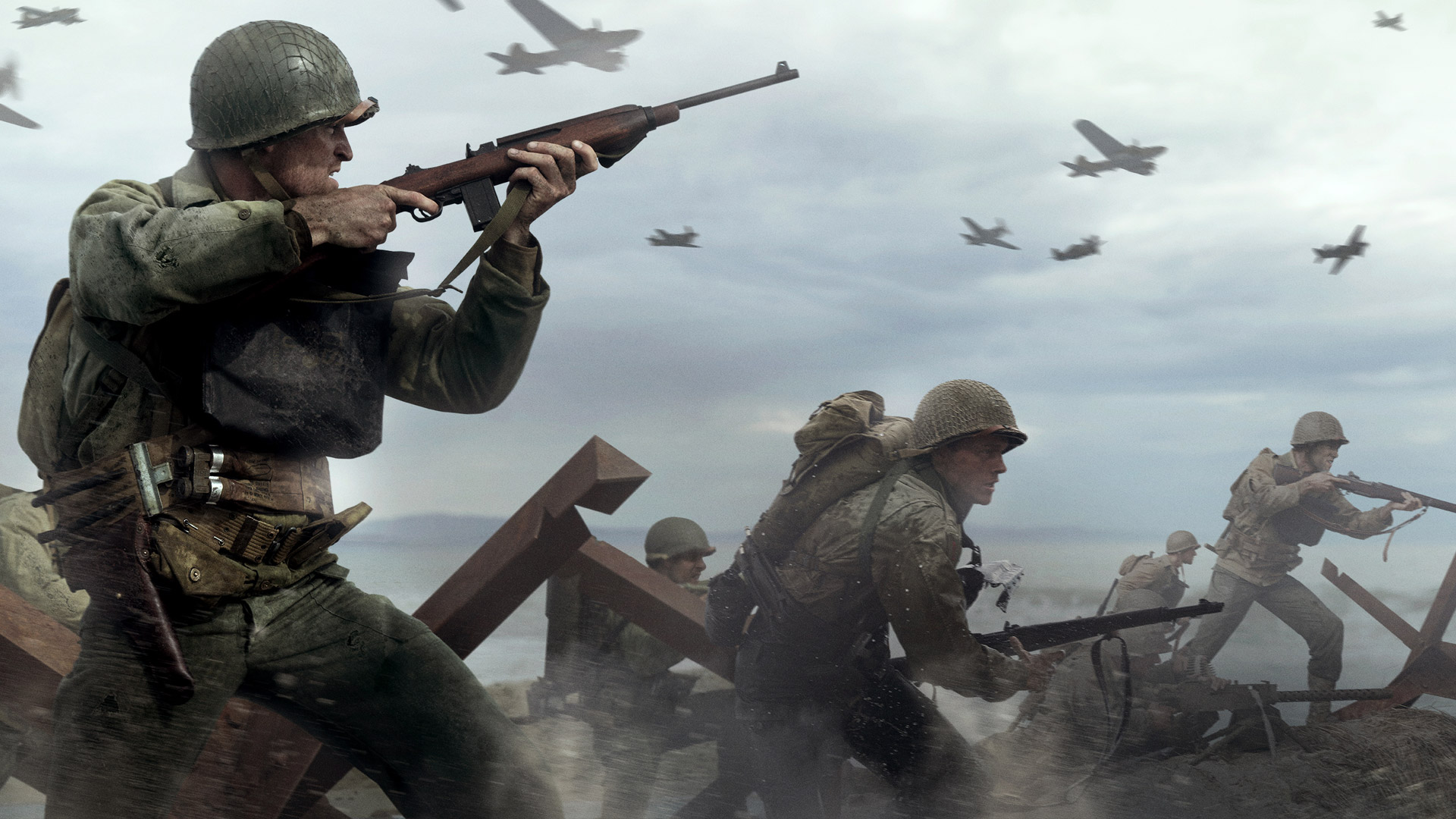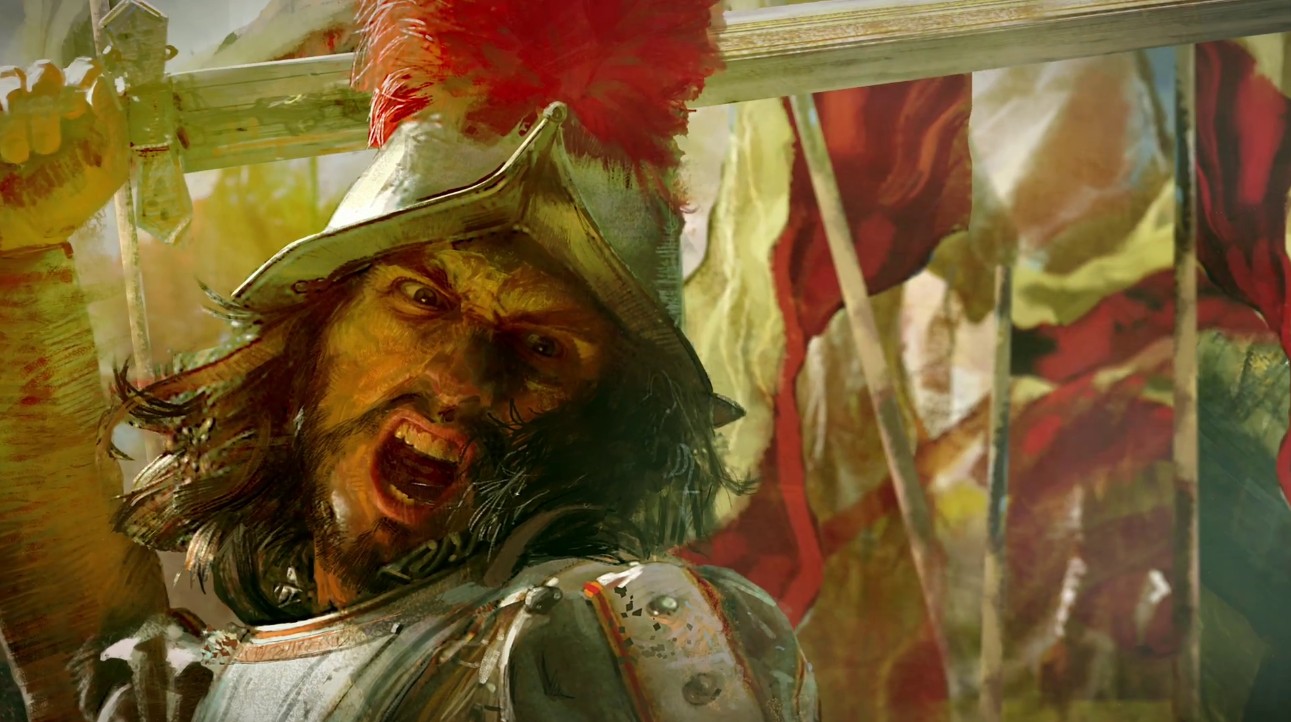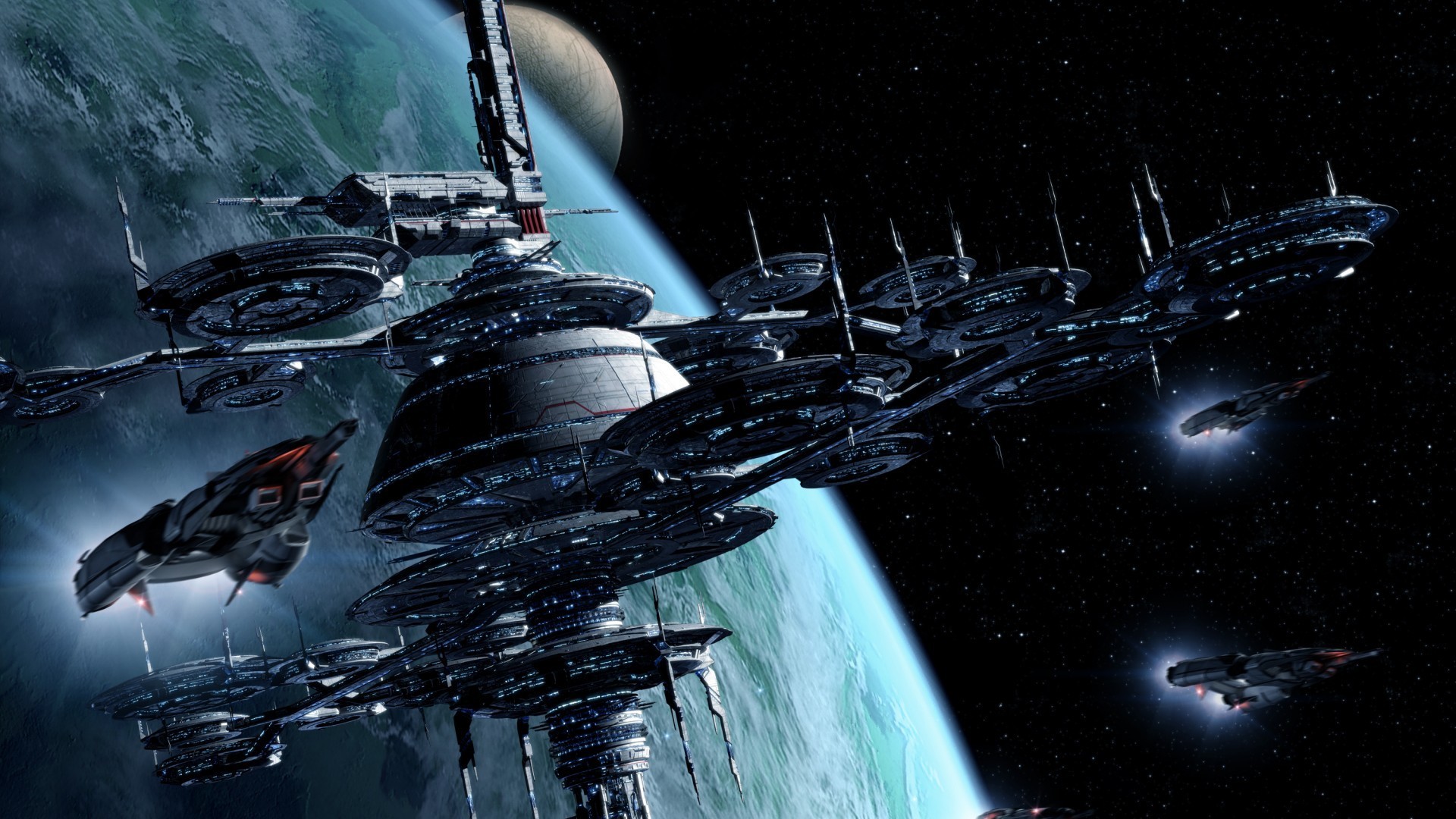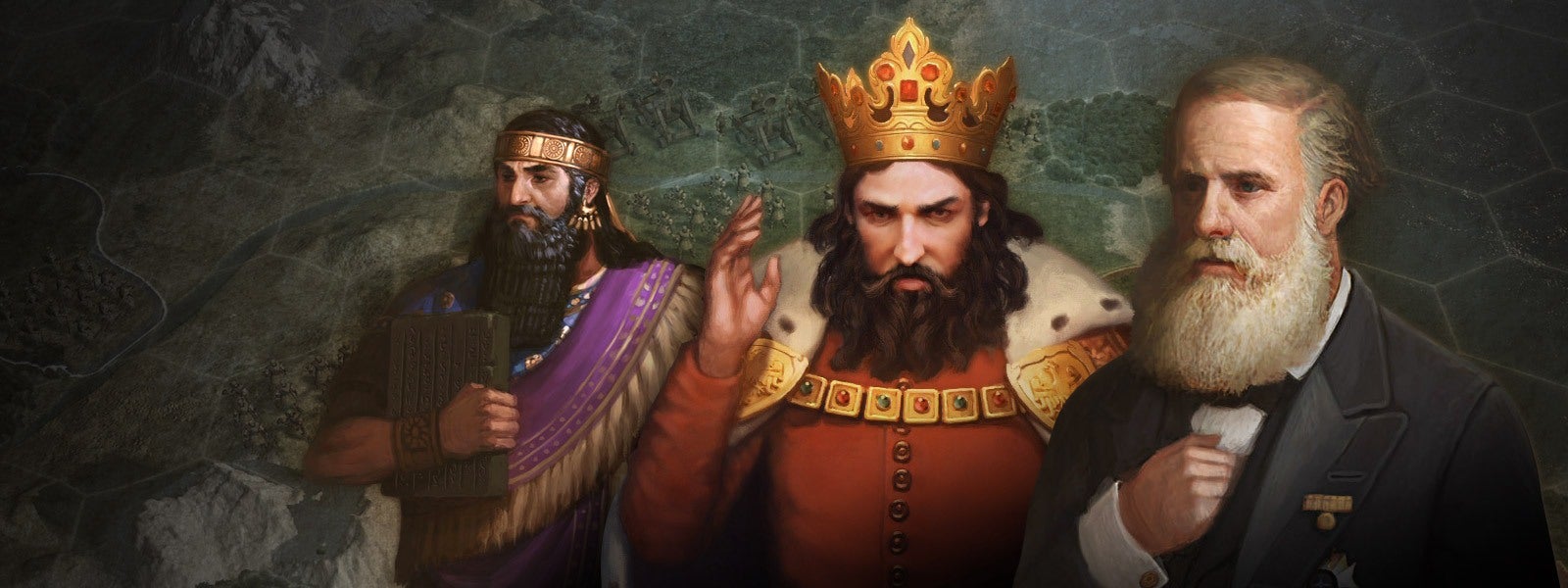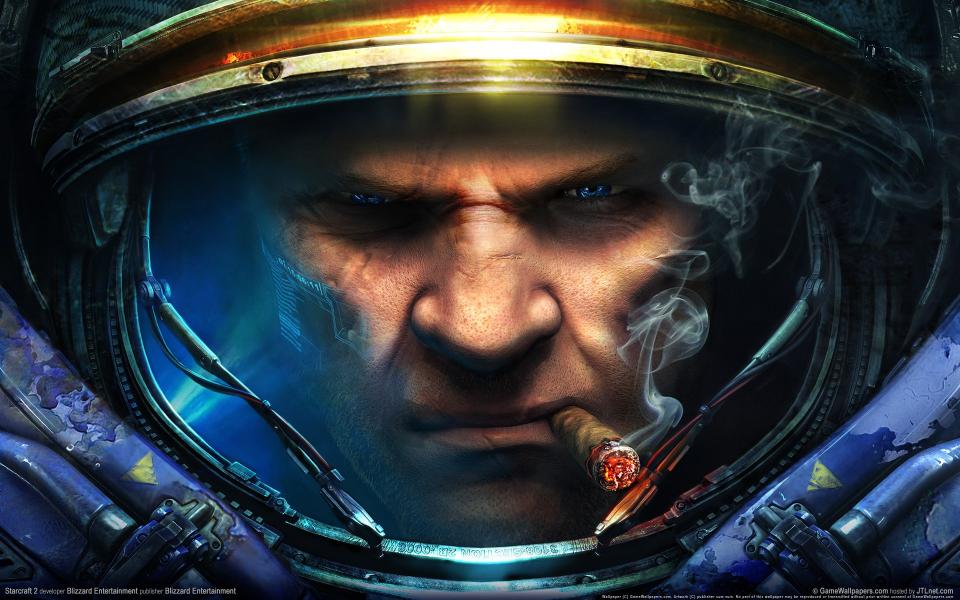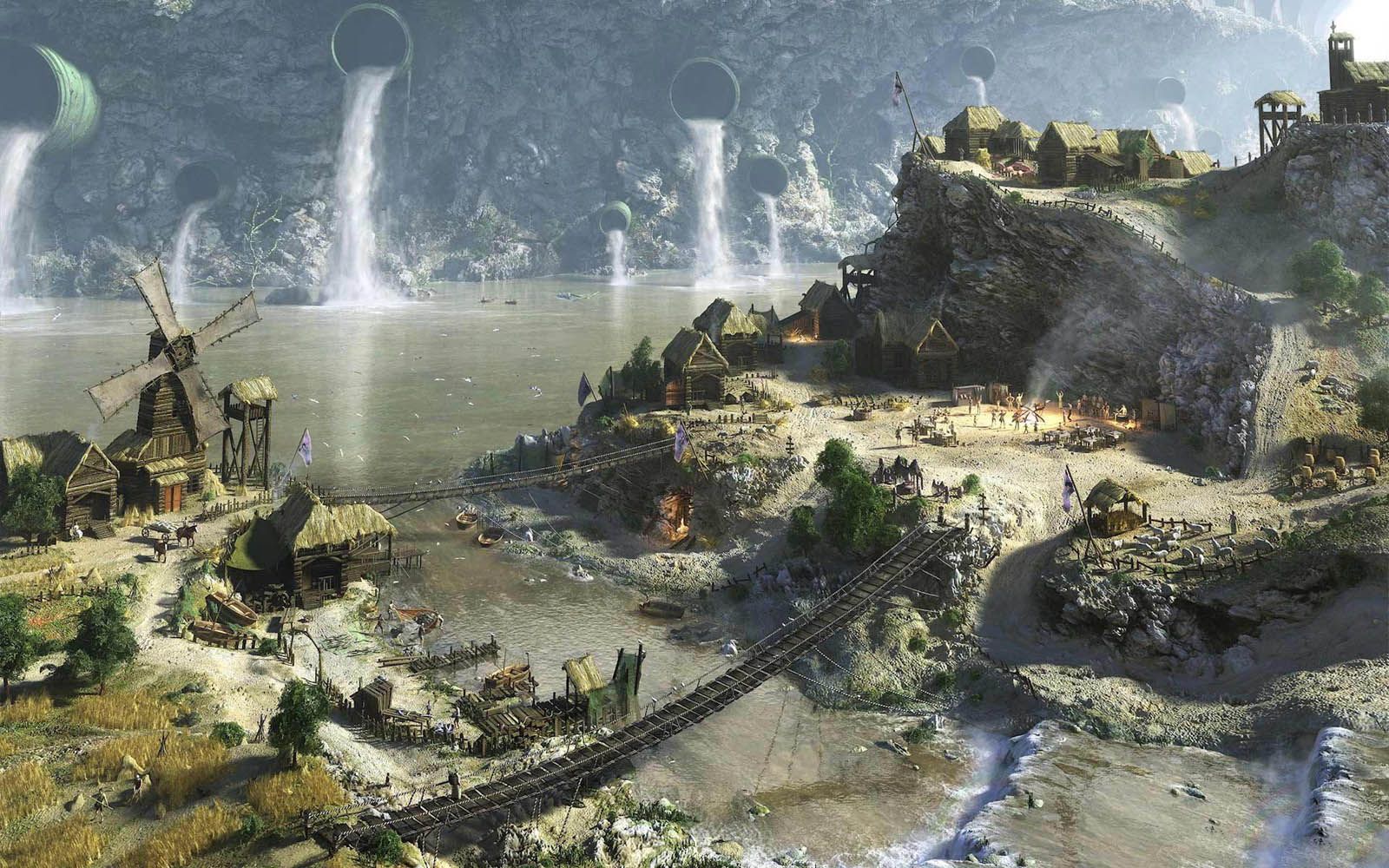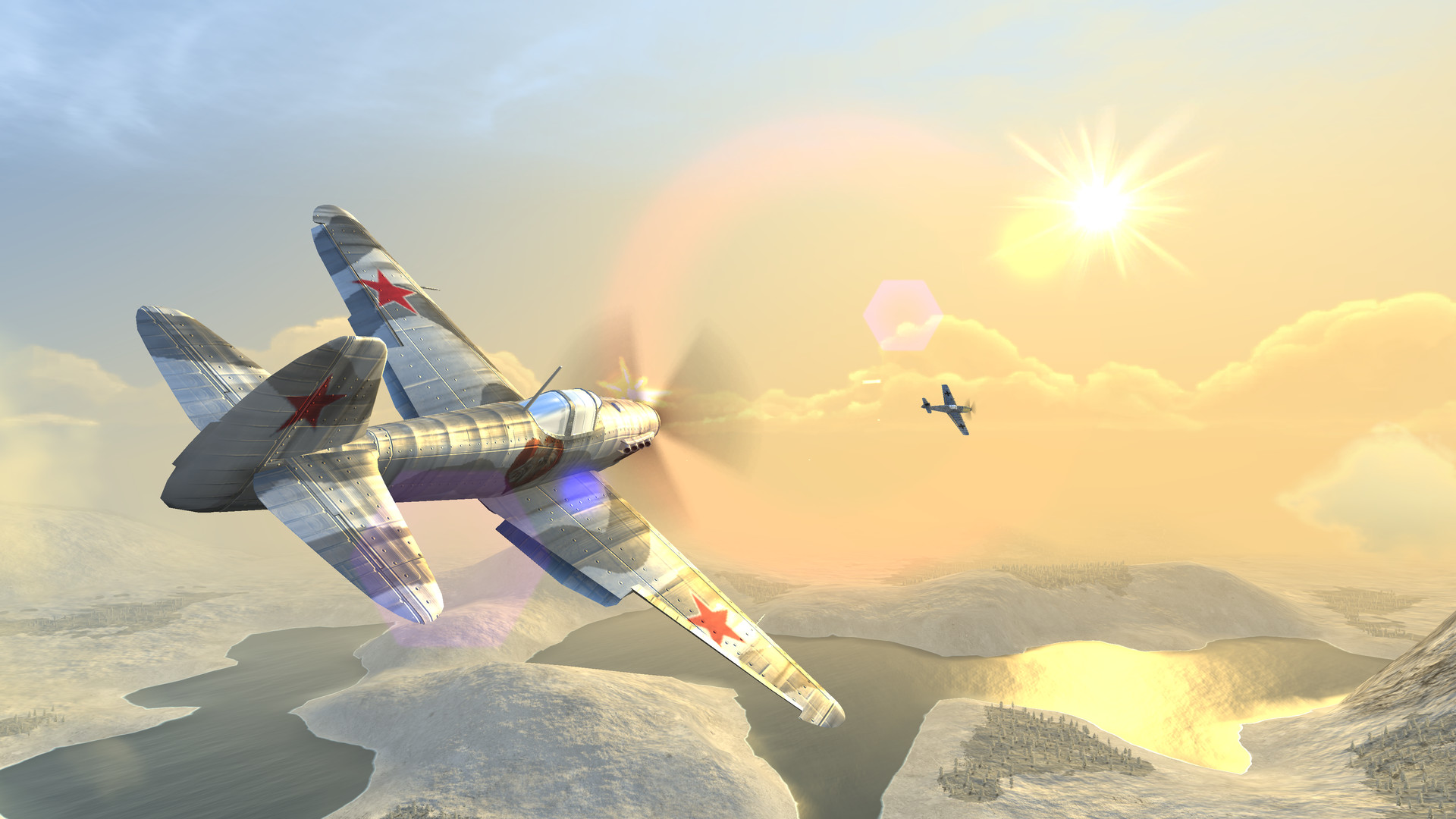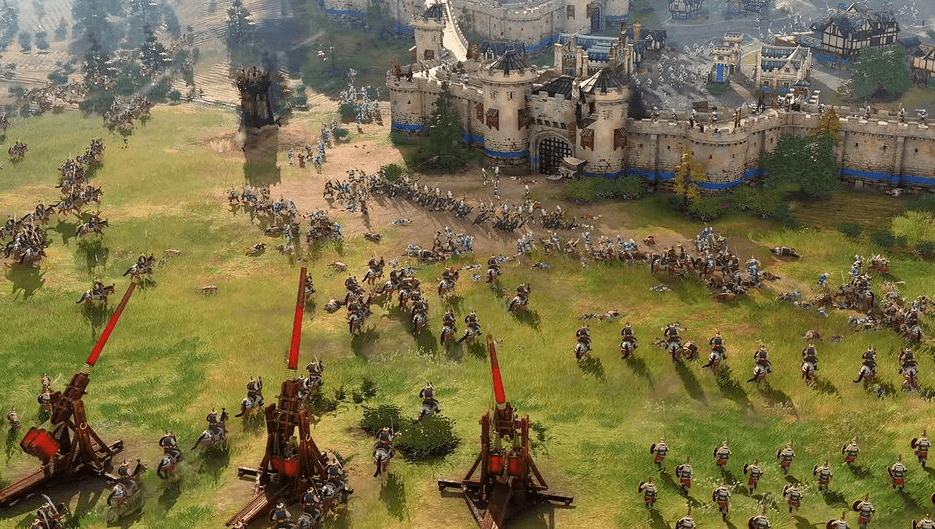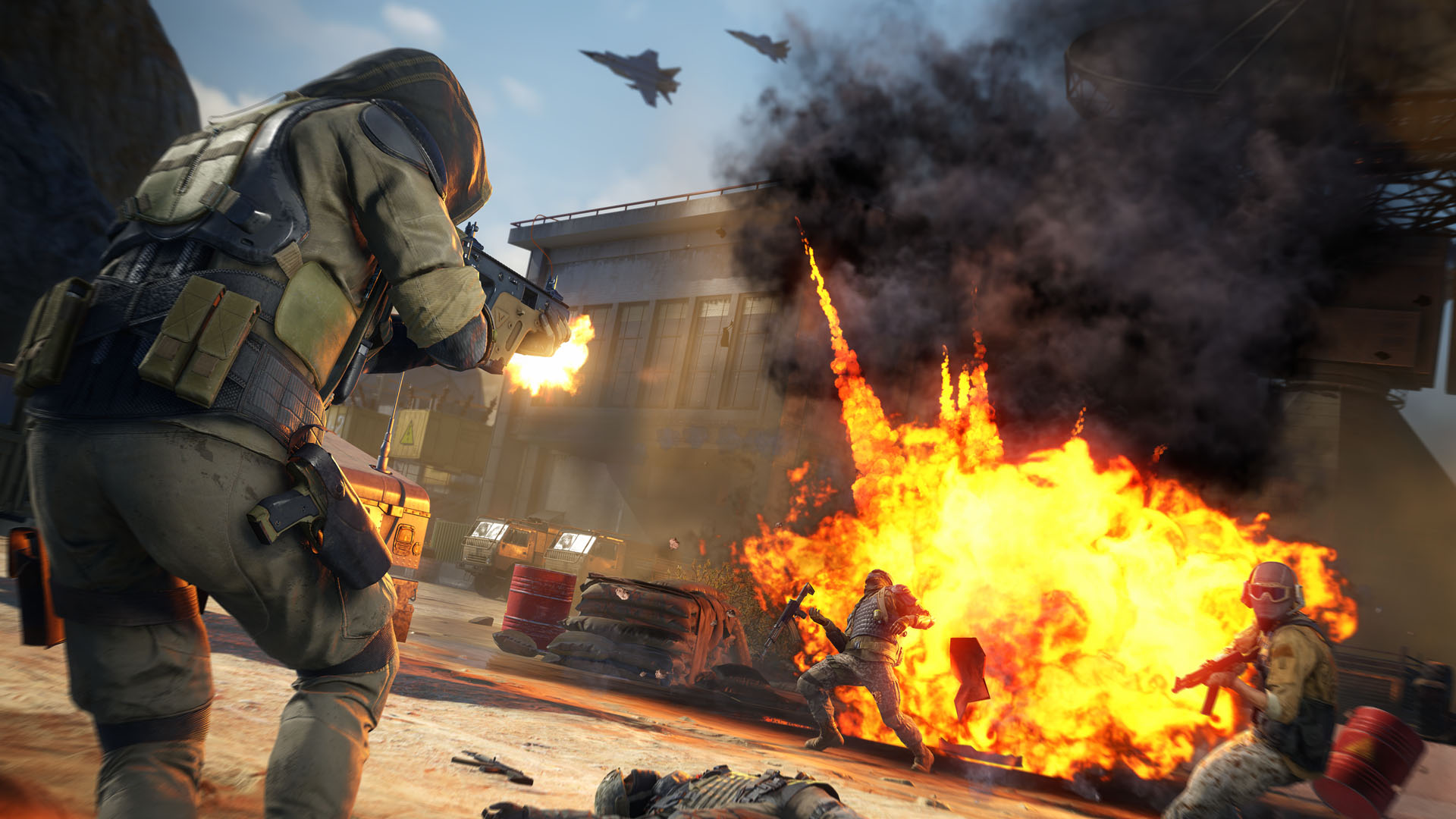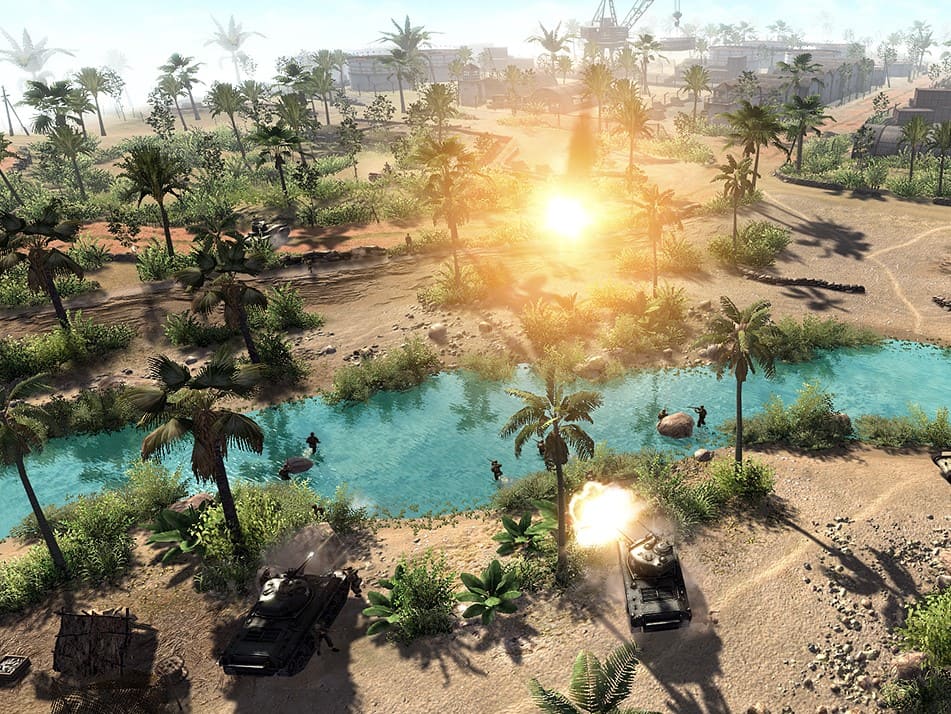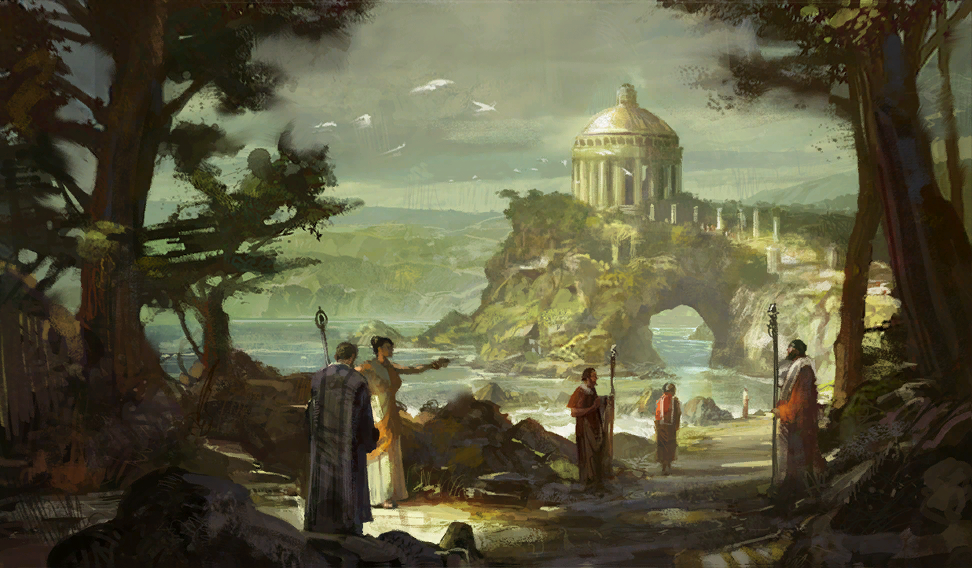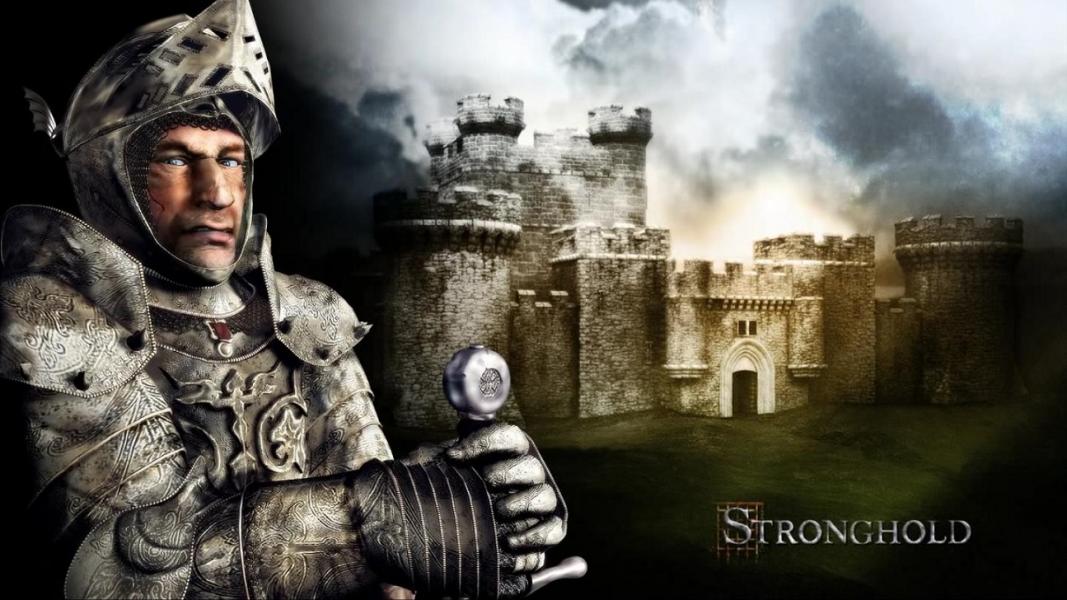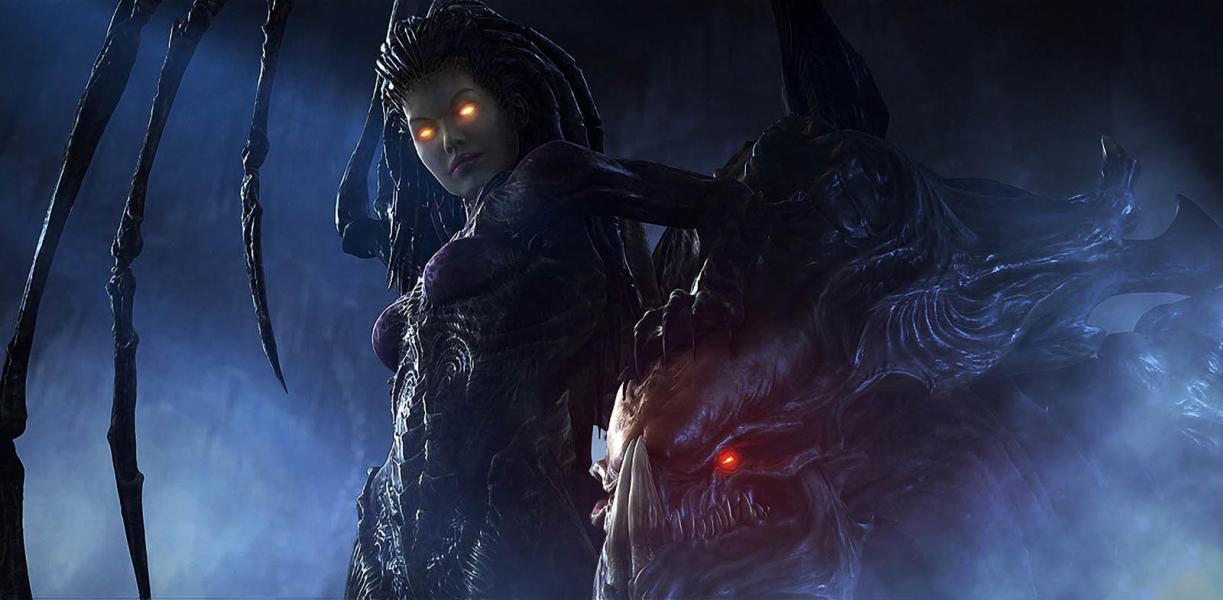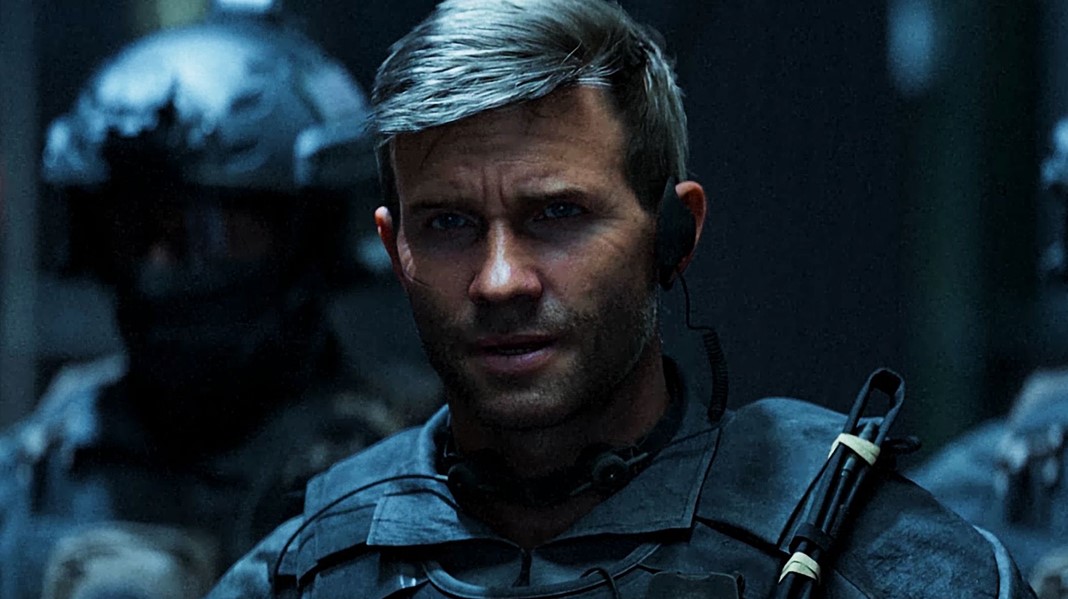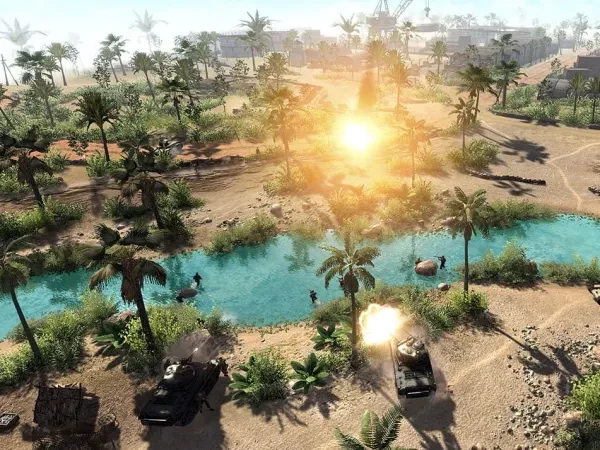
The intensity, the thrill of battle, along with swift, cold and calculated leadership, and in the end, that sweet taste of victory against the overwhelming odds.
Is that fascinating to you?
If so, you might be interested in this wild bunch of strategy titles that may help you kill a few weekends, or perhaps even months!
To keep this list clean, we'll focus strictly on titles that feature post-WWI military tech and don't lean too heavily into sci-fi.
10. Steel Division 2
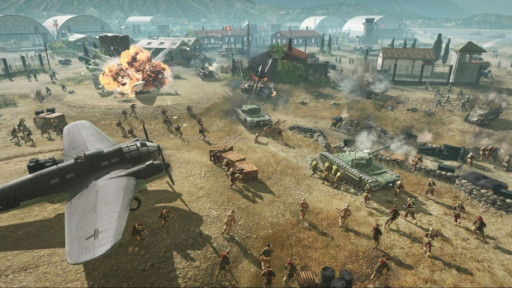
Steel Division 2’s page on Steam
Steel Division 2 might be Eugen Systems’s best WWII-themed strategy title, set during the Eastern Front’s largest offensive, 1944’s Operation Bagration. With over 600 units recreated with painstaking accuracy, massively-scaled campaigns and numerous multiplayer modes, this game aims to be a bonafide wartime capsule experience, - and gets the job done perfectly.
Shifting its focus from the Normandy battles to Operation Bagration, Steel Division 2 marks the first title in Eugen Systems's long line of wargames to be published independently from Focus Entertainment or Paradox Interactive.
The main draw of any of Eugen's titles is the ability to build unit decks, and knowing how to assemble a strategically viable division is less of an advantage and more of a necessity. A deck includes several squads, each based on a certain unit type, be it recon units, or tanks, or artillery.
There's quite a lot of variables to juggle: unit stats and properties, their ranking, how soon they will appear on the battlefield and how many of them will, - and you're given a finite amount of activation points to balance everything out. If you're unsure, the computer can do the deckbuilding for you - but even then, you might want to optimise your troop distribution.
Unlike its' prequel, Steel Division 2 provides not just one campaign per faction; instead, it comes with several Dynamic Strategic Campaigns, each with a certain long-term objective. The game bounces around a turn-based strategy map (for general attack orders given to divisions) and real-time tactical battles (with more precise control over companies); and you're expected to lead your troops to victory every step of the operation, up until the end.
Assembling a strategically viable battalion is only half the battle won, if not a quarter of it: you will need to actively recon the area, be on the lookout for the enemy moves and react to them accordingly, not to mention quickly.
There's plenty of hotkeys and rules to keep in mind, too, like how infantry can traverse through dense woods while vehicles cannot, and how much of an advantage radios give when planning for corrective fire, - and that's only the tip of the iceberg.
So while Steel Division 2 provides an intense and blood-boiling Eastern Front experience, players would have to work for it, especially since the game comes with no tutorial. If you're new to the series, scour through the internet for guides and play skirmishes a lot.
9. Iron Harvest
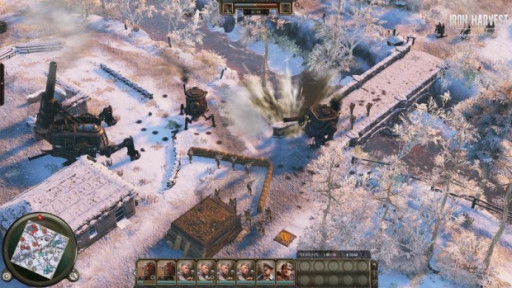
Iron Harvest’s page on Steam
Iron Harvest is an easy-to-learn blend of oldschool RTS’es and their more realistic cousins, set in the dieselpunk-driven 1920’s war between Rusviet and the alliance of Polania and Saxony, told in three story campaigns that can be played alone or in co-op. A selection of units for every situation, as well as utilising cover, allows to come up with a variety of tactics, from stealth to full-on assault.
Set in Jakub Rozalski's alternate version of the 1920's and on, where mechs are the only viable mode of transport, and Imperial Russia has set out on world domination, Iron Harvest is one of the very few modern RTS'es to appear on current-gen consoles, as well as on PC's.
When it comes to units, Iron Harvest focuses more on quality than it does quantity: every hero unit, artillery, mecha or group of soldiers gets its' own card at the bottom of the screen, and while it's possible to have more cards that can fit on the HUD, controlling them all at once may prove to be a challenge. Like in conventional RTS'es, infantry can be trained in the barracks, while mechs are built in workshops, and resources for both can be procured by capturing iron mines and oil rigs - and that's where the similarities between Iron Harvest and, say, Command & Conquer end, for the most part.
There's a bit more control over infantry than the usual point-'n-click, as they can be ordered to hide behind cover, garrison buildings and even arm themselves with weapons dropped by the dead soldiers, which effectively allows your soldiers to be several unit types at once. As for cover, while it does give protection to the squad you're controlling, it can be very easily taken down with explosives or high-calibre cannons - something you also could use to your advantage. The big guns are also usable against heavily-armoured units, mechs especially, which can't be easily brought down with rifles or shotguns.
The three campaigns (that's if we don't count the climactic final battle and the Usonia DLC) can be played either alone or with a friend, and are very heavy on the plot, with cutscenes, one-man missions and a conspiracy storyline that kicked off this whole war. Every mission comes with its own set of medal challenges - tertiary objectives that aren't necessary for completing the game, but are helpful in increasing your player rank. And, as in every self-respecting RTS, skirmish and multiplayer modes are present, too.
8. Wargame: Red Dragon
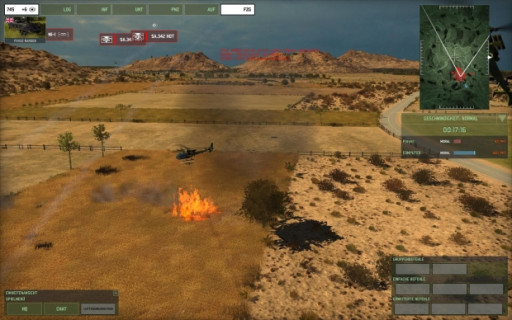
Wargame: Red Dragon’s page on MobyGames
Wargame: Red Dragon is a sequel to the critically acclaimed series (preceded by European Escalation and AirLand Battle), which explores many different ways the Cold War would’ve gotten hot. Featuring the two opposing blocs, NATO and the Warsaw Pact, as well as many other countries unrelated to them, Red Dragon is easily the most expansive and elaborate World War III simulator.
The whole Wargame series serves as a prototype to Eugen's future titles like Steel Division and WARNO, with the letter also set in an alternate Cold War. Though unlike WARNO, neither game is set in one particular continuity: instead, they all are sets of unrelated stories based on real-life events that came close to provoking NATO and the Warsaw Pact to fight.
That said, aside from moving the combat theatre to East Asia, Red Dragon brings naval units into the mix, from submarines to aircraft carriers - it's even advertised on the cover art.
One staple of Eugen's titles are decks - selections of units, themselves split into several purpose- or unit type-specific categories. Each faction in Wargame has its own selection of units, tailor-made to fit the faction's strategic approach, with a whopping 1450 units in total, and that’s not counting downloadable content.
Speaking of DLC, this instalment of Wargame might be the longest Eugen Systems have supported a game so far, with its latest Nation Pack being released in September 2021 - and that's for a 2014 title!
7. Company of Heroes 3

Company of Heroes 3’s page on Steam
Company of Heroes 3 is the sequel to an award-winning series, now set in the barely-covered Mediterranean theatre of World War II - with a non-linear campaign that’s broken up by turn-based segments. On top of existing gameplay mechanics, CoH3 adds even more ways to enrich the commanding experience, most notably tactical pause and a vastly improved damage system for buildings.
The most recognisable title on our list, Company of Heroes 3 continues to explore the battles and struggles of World War II, this time in the Mediterranean, with missions taking place in Italy and North Africa.
Company of Heroes 3, for the most part, remains the same as its predecessors, with one of the notable additions to the series being Full Tactical Pause, which allows you to give orders while the game is put on hold - something that has already been in a few popular RTS'es prior. Also new to the series, and perhaps the whole genre, is a variety of ways buildings and surroundings can be utilised to your advantage and the enemy's disadvantage: the official page gives an example of how a fortified building could take an entire enemy squad with it, while its' ruins are going to be used as improvised cover. It also primarily bills this feature as cinematic, but old-time CoH players will definitely be more interested in the tactical side of it.
Similarly to quite a few modern titles, the campaign will not be a series of pre-set missions, but rather something more open-ended, - Relic themselves call it the Dynamic Campaign Map, - allowing you to control every aspect of your army and even put your own “global” combat plan to fruition. There are also improvements in multiplayer, with four different factions available for play: two on the Axis side (Wehrmacht and Afrikakorps), two on the Allied side (the U.S. and British forces), each with new doctrines that revolve around certain unit types or partisan forces. Unlike in Company of Heroes 2, PvP maps are also more traversable, allowing for more unpredictable and fast-paced gameplay.
6. WARNO

WARNO’s page on Steam
WARNO is the newest title in Eugen Systems’s gameography, as well as a spiritual successor to Wargame, but far more intense. It’s the early nineties, and an armed conflict has broken out between NATO and the Warsaw Pact over both halves of Germany - you can be the one who settles it, with over 600 different units of the era and immensely large battlefields at your disposal.
WARNO (short for "Warning Order") could be described as Steel Division, but modernised in more ways than one, as it features improved interface and takes place in an alternate 1989, where Cold War went out of hand and gave leeway to the Third World War, - with the tech appropriate to the era.
There's six countries involved in the conflict, each with their vehicles and weapons, but all of them belong to either of the two major factions: NATO and the Warsaw Pact. In a way, it could also be a modernised version of Eugen's own Wargame series, also set in a war-ridden version of the Cold War.
Pretty much all rules and mechanics from Eugen's previous titles apply here as well: decks with several unit type-based squads from one or several countries, every battle is on a timer, recon is an absolute must, unit abilities matter as much as the surroundings do, and every offensive action should be countered as quickly as possible.
However, military tech has significantly improved from the 1940's, which adds a sleuth of new rules into the game. Namely, you have the option of using long-ranged, radar-based AA's, which puts you under the risk of getting outed by the enemy, - or you could use IR-based and direct shot AA's which can't be spotted by enemy aircraft, but cover less territory.
Helicopters are very effective at gunning down infantry, but can get shot as easily, therefore commanding them needs extra care. There's a few QoL features added in as well, such as the ability to give orders to units during the pre-deployment phase.
As of this writing, WARNO is yet to feature any kind of story campaign. That said, the closest thing to it was announced not too long ago: Army General maps are large-scale campaigns in the vein of Steel Division 2 that are universally playable with any combination of actual players and AI opponents, with or against either. On top of retaining the massive scale of the combat theatre (up to 150 square kilometres in size), WARNO will also let you control over smaller formations of units than what was allowed in SD2.
5. Blitzkrieg Anthology
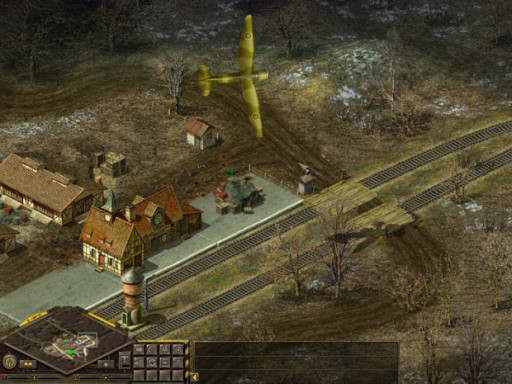
Blitzkrieg Anthology’s page on GOG.com
Blitzkrieg is a significant milestone among World War II RTS games. Basing itself on what the Sudden Strike series has achieved, Blitzkrieg brings an even deeper level of realism to the genre, complete with battles that rely on thinking rather than brute force, heavy tech, resupplying, bridge building and trench digging. A game so popular it spun off plenty of mission packs and standalone games on the same engine.
Blitzkrieg is less of a spiritual successor of Sudden Strike and more of a direct improvement on its well-established formula - as well as the foundation for many, many other standalone titles, not to mention expansions to Blitzkrieg proper, both authorised and unofficial.
Like Sudden Strike, the Blitzkrieg series aims to deliver a well-rounded blend of real-time strategy control and military realism, but with even more attention to detail than its predecessor. There's still no basebuilding involved, which shifts focus to battles and careful unit management. When commanding a platoon, surroundings like trees, hills, cliffs and buildings still matter a lot, but now you'd also have to consider the weather on the battlefield, plus the regional climate, and possibly even use all of the above to your advantage.
As before, a lot of care is put into how military vehicles and ammunition are portrayed in the game - and all of this ties to Blitzkrieg's elaborate damage system. All of that is important to know or, at least, be aware of, since the better you perform as a commander, the sooner you get promoted - and better rank means more units under your control.
Blitzkrieg came with a level editor, which allowed people to make missions of their own and even mod the game to their liking, which is likely how numerous add-ons and standalones popped up. That, of course, is for hardcore fans who didn't get enough from the base campaigns - and they're already massive enough.
Some of the missions are historical, some of them revolve around generic assignments like capturing bridges or warehouses - but cracking one such mission is guaranteed to take at least two hours of your time. One, if you’re well-aware of what you’re doing.
Note that Blitzkrieg Anthology includes all of the official mission packs, but none of the sequels - that's what Blitzkrieg 2 Anthology is for.
4. Men of War: Assault Squad 2

Men of War: Assault Squad 2’s page on MobyGames
Men of War: Assault Squad 2 is the newest, most polished iteration of the decades-old series, now with quality-of-life features that make commanding one of the existing five factions (USSR, USA, United Kingdom, Japan and Axis) that much easier, as you’re able to directly control any given unit. On top of various singleplayer scenarios, Assault Squad 2 features 8-player co-op, as well as several 8v8 battle modes.
Men of War: Assault Squad 2 is actually the thirteenth instalment in a series that's, confusingly enough, has been known under many names both in and out of the English localisations.
Though generally, “Men of War” has been the standardised English title of the series, while "V tilu vraga" is this for Russian-speaking audiences, not all games from the lineup took up the convention. In fact, the original Assault Squad was the third expandalone for Faces of War, also known as "V tilu vraga 2", adopting the subtitle "Sturm"; the Russian title of its' sequel, Assault Squad 2, is "V tilu vraga: Sturm 2".
The game proper is more than one sequel number trading places: while Assault Squad 2 builds its' gameplay on top of a decade-old formula, there's a few notable additions to it, such as the direct control mode - making micromanagement significantly easier, and lobbing grenades that much more satisfying. Also new to the series is the improved camouflage system that changes camo colour depending on climate and weather conditions around.
Infantry is the bread and butter of Men of War: cheap, useful in the right hands, and with most in-depth control of all unit types, but also, appropriately, hard to master and very easy to lose, especially if they're directly exposed to enemy gunfire. If either player is good at controlling infantry, the one unit type that can make or break a battle is tanks: ridiculously expensive compared to everything else and effective in battle - provided you also know how and when to use them. Losing an uncovered tank, especially to foot soldiers, is not only embarrassing, but also something that robs you of manpower points you could've used for reinforcements.
Assault Squad 2 is brimming with content, featuring five factions, with a total of over 200 infantry types and 250 vehicles. The singleplayer portion includes 40 maps, 25 of which are the reworked scenarios from the prequel, with the remaining 15 featuring sniper missions, paratrooper operations and tank battles, - all of that can be played cooperatively as well. PvP is still there, too, complete with the new 8v8 team mode.
3. The Great War: Western Front
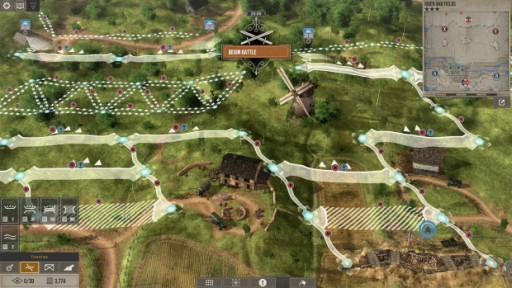
The Great War: Western Front’s page on Steam
The Great War: Western Front is a fresh take on the military RTS genre - easy to learn, difficult to master, and set years prior to the everpresent World War II setting. Faction-wide upgrades highlight how much military tech has evolved from 1914 to 1919, putting a new spin on trench warfare every playthrough, not to mention they’re vital in achieving victory.
From Petroglyph, the former devs of Command & Conquer titles, comes a World War I game that plays nothing like Command & Conquer.
Similarly to a lot of wargames with non-linear campaigns, The Great War features both a turn-based tactical map and real-time battles on a smaller scale - but unlike the aforementioned titles, the tactical map here is hexagonal, with every tile representing either a free plot of land or a city. Winning a campaign boils down to one of two things: whittling down your opponent's national will, or capturing their headquarters - as, according to Chris Becker, World War I was more of "a war of attrition and a battle of inches". Either winning condition can be accomplished through timely attacks, as well as espionage, resource management (which requires both keeping track of your military budget and unit supplies) and researching new upgrades. And while the real-time part of the game, the battles, can be auto-resolved, it's best that you take control of it yourself.
The Great War focuses mostly on trench warfare and everything that entails. Every time the pre-deployment phase occurs, you'll be asked to plan out your trench network, and, after you're done, place your infantry in the freshly dug-out pits and your artillery somewhere nearby. You will spend most of your time trying to fight enemies hiding in their own trenches, which, among other things, heavily relies on having a strong advantage in numbers - the attacking melee squads would have to survive going through open fire and the entrenched enemy attacking them. That's primarily how most battles will go in your 1914 run - things will only become more complex with time, and weather.
There's a ridiculously huge research tree, which gives you and your opponent access to new tech, weapons or ways to make infiltrating trenches more difficult: barbed wire, bunkers, tanks, blimps, bomber planes and poison gas. What helps alleviate the repetitiveness of 1914's basic trench battles is how gradual the transition to 1919's technological warfare is - and that definitely makes every battle feel more fun and engaging than the ones before.
2. Regiments
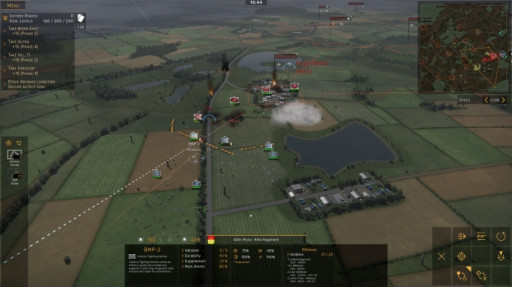
Regiments’s page on Steam
Regiments is effectively Wargame or WARNO for people who consider those two games a little too daunting. Told through the nine-mission campaign is the story of how the Cold War went hot, as NATO and the Warsaw Pact are trying to take Germany to themselves. Regiments is more beginner-friendly than most other wargames, with numerous quality-of-life features and simplified squad assembly mechanics.
Regiments is another take on an alternate reality Cold War that has gone hot, and while it's somewhat similar to Eugen Systems's Wargame and WARNO (both with a similar premise of NATO fighting against the Warsaw Pact), it's more approachable to both the newbies to the genre who are willing to learn and to RTS veterans wishing for something less intense but nevertheless challenging.
The missions are played out in real time, and also in three timed phases - the side with the most victory points, which are usually earned by capturing control points, wins the phase. Like in Eugen's titles, the camera will remain zoomed out over 90% of the time so you could have a good look at the battlefield, as well as a better idea of how your far-ranged attacks will go. In fact, a lot of tropes from Eugen's titles are present in Regiments, right down to having to remember every hotkey to remain as effective as possible.
The preparation phase, however, is not deck-based and is more tied to individual missions, complete with a limited number of divisions available, an optional selection of special squads, as well as random events that may or may not put your troops at an advantage. That’s not to mention the pacing is not as neck-breaking as it is in WARNO, giving you and your regiments more time to adjust to the surroundings.
Much like its' alternatives, Regiments goes for the realistic approach by featuring over a hundred units, closely designed after their real life counterparts, with appropriate stats - but if you are an old Command & Conquer player, you might want to know that this game also features a battlefield announcer, as well as a dynamic soundtrack.
1. Call to Arms

Call to Arms’s page on Steam
Call to Arms builds on top of Digitalmindsoft’s Men of War games, with a few twists along the way: it’s modern warfare, and it’s a blend of several genres. In Call to Arms, tactical wits meet precise gunplay, as the game offers several levels of control: from RTS, through TPS, to FPS; but remember: cover is important no matter who you’re controlling, or how you’re controlling them.
After the success of Men of War: Assault Squad 2, Digitalmindsoft wanted to create something similar but vastly improved and set in the modern age, rather than the well-exploited setting of World War II.
Being a crowdfunded title, Call to Arms took quite a bit of time to develop, - around three years, with a pre-existing engine and gameplay mechanics, as well as early access, - but if the player feedback is anything to go by, it was worth it.
In a unique twist to most other entries on the list, Call to Arms gives you every scale of unit management, starting from the usual point-'n-click affair, then going deeper into top-down direct control, third- and first-person shooter modes. Infantry is still the one unit type you will control 70% of the time, as you would in Men of War, so this feature only further streamlines the much-needed micro management. Same can be said for armoured vehicles and helicopters, even though, like before, they act more as heavy backup units - they're powerful, but their presence alone doesn't define if you win or not.
One mode that's new specifically to Call of Arms is Survival, where you get to gun down endless waves of enemies and not get gunned down yourself - though that's going to happen sooner or later.


